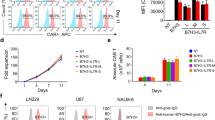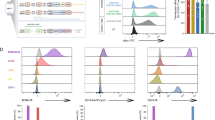Abstract
T-cell engager (TCE) molecules activate the immune system and direct it to kill tumor cells. The key mechanism of action of TCEs is to crosslink CD3 on T cells and tumor associated antigens (TAAs) on tumor cells. The formation of this trimolecular complex (i.e. trimer) mimics the immune synapse, leading to therapeutic-dependent T-cell activation and killing of tumor cells. Computational models supporting TCE development must predict trimer formation accurately. Here, we present a next-generation two-step binding mathematical model for TCEs to describe trimer formation. Specifically, we propose to model the second binding step with trans-avidity and as a two-dimensional (2D) process where the reactants are modeled as the cell-surface density. Compared to the 3D binding model where the reactants are described in terms of concentration, the 2D model predicts less sensitivity of trimer formation to varying cell densities, which better matches changes in EC50 from in vitro cytotoxicity assay data with varying E:T ratios. In addition, when translating in vitro cytotoxicity data to predict in vivo active clinical dose for blinatumomab, the choice of model leads to a notable difference in dose prediction. The dose predicted by the 2D model aligns better with the approved clinical dose and the prediction is robust under variations in the in vitro to in vivo translation assumptions. In conclusion, the 2D model with trans-avidity to describe trimer formation is an improved approach for TCEs and is likely to produce more accurate predictions to support TCE development.






Similar content being viewed by others
References
Arvedson T, Bailis JM, Britten CD, Klinger M, Nagorsen D, Coxon A et al (2022) Targeting solid tumors with bispecific T cell engager immune therapy. Annu Rev Cancer Biol 6:17–34
Baeuerle PA, Reinhardt C (2009) Bispecific T-cell engaging antibodies for cancer therapy. Cancer Res 69:4941–4944
Saber H, Del Valle P, Ricks TK, Leighton JK (2017) An FDA oncology analysis of CD3 bispecific constructs and first-in-human dose selection. Regul Toxicol Pharmacol 90:144–152
Sun LL, Ellerman D, Mathieu M, Hristopoulos M, Chen X, Li Y et al (2015) Anti-CD20/CD3 T cell–dependent bispecific antibody for the treatment of B cell malignancies. Sci Transl Med. 7:287
Betts A, Haddish-Berhane N, Shah DK, van der Graaf PH, Barletta F, King L et al (2019) A translational quantitative systems pharmacology model for CD3 bispecific molecules: application to quantify T cell-mediated tumor cell killing by P-cadherin LP DART®. AAPS J 21:66
Betts A, van der Graaf PH (2020) Mechanistic quantitative pharmacology strategies for the early clinical development of bispecific antibodies in oncology. Clin Pharmacol Ther. https://doi.org/10.1002/cpt.1961
Li L, Gardner I, Gill K. Modeling the binding kinetics of bispecific antibodies under the framework of a minimal human PBPK model. AAPS NBC Poster. certara.com; 2014. Available: https://www.certara.com/poster/modeling-the-binding-kinetics-of-bispecific-antibodies-under-the-framework-of-a-minimal-human-pbpk-model-2/
Schropp J, Khot A, Shah DK, Koch G (2019) Target-mediated drug disposition model for bispecific antibodies: properties, approximation, and optimal dosing strategy. CPT Pharmacometr Syst Pharmacol 8:177–187
Yoneyama T, Kim M-S, Piatkov K, Wang H, Zhu AZX (2022) Leveraging a physiologically-based quantitative translational modeling platform for designing B cell maturation antigen-targeting bispecific T cell engagers for treatment of multiple myeloma. PLoS Comput Biol 18:e1009715
Jiang X, Chen X, Carpenter TJ, Wang J, Zhou R, Davis HM et al (2018) Development of a Target cell-Biologics-Effector cell (TBE) complex-based cell killing model to characterize target cell depletion by T cell redirecting bispecific agents. MAbs 10:876–889
Campagne O, Delmas A, Fouliard S, Chenel M, Chichili GR, Li H et al (2018) Integrated pharmacokinetic/pharmacodynamic model of a bispecific CD3xCD123 DART molecule in nonhuman primates: evaluation of activity and impact of immunogenicity. Clin Cancer Res 24:2631–2641
Ma H, Wang H, Sove RJ, Jafarnejad M, Tsai C-H, Wang J et al (2020) A quantitative systems pharmacology model of T cell engager applied to solid tumor. AAPS J 22:85
Kaufman EN, Jain RK (1992) Effect of bivalent interaction upon apparent antibody affinity: experimental confirmation of theory using fluorescence photobleaching and implications for antibody binding assays. Cancer Res 52:4157–4167
Erlendsson S, Teilum K (2020) Binding revisited-avidity in cellular function and signaling. Front Mol Biosci 7:615565
Harms BD, Kearns JD, Iadevaia S, Lugovskoy AA (2014) Understanding the role of cross-arm binding efficiency in the activity of monoclonal and multispecific therapeutic antibodies. Methods 65:95–104
Labrecque N, Whitfield LS, Obst R, Waltzinger C, Benoist C, Mathis D (2001) How much TCR does a T cell need? Immunity 15:71–82
Virtanen P, Gommers R, Oliphant TE, Haberland M, Reddy T, Cournapeau D, et al. SciPy 1.0: fundamental algorithms for scientific computing in Python. Nat Methods. 2020;17: 261–272.
Hoffmann P, Hofmeister R, Brischwein K, Brandl C, Crommer S, Bargou R et al (2005) Serial killing of tumor cells by cytotoxic T cells redirected with a CD19-/CD3-bispecific single-chain antibody construct. Int J Cancer 115:98–104
Sobol IM (2001) Global sensitivity indices for nonlinear mathematical models and their Monte Carlo estimates. Math Comput Simul 55:271–280
Herman J, Usher W (2017) SALib: an open-source Python library for Sensitivity Analysis. J Open Source Softw 2:97
Iwanaga T, Usher W, Herman J (2022) Toward SALib 2.0: Advancing the accessibility and interpretability of global sensitivity analyses. Socio-Environ Syst Model 4:18155
Saltelli A (2002) Making best use of model evaluations to compute sensitivity indices. Comput Phys Commun 145:280–297
Dreier T, Lorenczewski G, Brandl C, Hoffmann P, Syring U, Hanakam F et al (2002) Extremely potent, rapid and costimulation-independent cytotoxic T-cell response against lymphoma cells catalyzed by a single-chain bispecific antibody. Int J Cancer 100:690–697
Rohatgi A. Webplotdigitizer: Version 4.5. 2021. https://automeris.io/WebPlotDigitizer
Kuchimanchi M, Zhu M, Clements JD, Doshi S (2019) Exposure-response analysis of blinatumomab in patients with relapsed/refractory acute lymphoblastic leukaemia and comparison with standard of care chemotherapy. Br J Clin Pharmacol 85:807–817
Iversen PO, Berggreen E, Nicolaysen G, Heyeraas K (2001) Regulation of extracellular volume and interstitial fluid pressure in rat bone marrow. Am J Physiol Heart Circ Physiol 280:H1807–H1813
Li Z, Krippendorff B-F, Sharma S, Walz AC, Lavé T, Shah DK (2016) Influence of molecular size on tissue distribution of antibody fragments. MAbs 8:113–119
Blincyto [package insert]. Thousand Oaks, California: Amgen Inc.; 2017.
Trinklein ND, Pham D, Schellenberger U, Buelow B, Boudreau A, Choudhry P et al (2019) Efficient tumor killing and minimal cytokine release with novel T-cell agonist bispecific antibodies. MAbs 11:639–652
Fooksman DR, Vardhana S, Vasiliver-Shamis G, Liese J, Blair DA, Waite J et al (2010) Functional anatomy of T cell activation and synapse formation. Annu Rev Immunol 28:79–105
Yeung YA, Krishnamoorthy V, Dettling D, Sommer C, Poulsen K, Ni I et al (2020) An optimized fulllLength FLT3/CD3 bispecific antibody demonstrates potent anti-leukemia activity and reversible hematological toxicity. Mol Ther 28:889–900
Friedrich M, Henn A, Raum T, Bajtus M, Matthes K, Hendrich L et al (2014) Preclinical characterization of AMG 330, a CD3/CD33-bispecific T-cell-engaging antibody with potential for treatment of acute myelogenous leukemia. Mol Cancer Ther 13:1549–1557
Verkleij CPM, Broekmans MEC, van Duin M, Frerichs KA, Kuiper R, de Jonge AV et al (2021) Preclinical activity and determinants of response of the GPRC5DxCD3 bispecific antibody talquetamab in multiple myeloma. Blood Adv 5:2196–2215
Acknowledgements
We would like to thank many colleagues at Applied BioMath who have contributed to the discussion of this work, including Victor Chang, Marc Presler, Saheli Sakar, Fereshteh Nazari. We would also like to thank Sarah A. Head and Max Nowak for performing the literature search for parameter values.
Author information
Authors and Affiliations
Contributions
All authors contributed to the design of the work and interpretation of results. DF and DB prepared all figures. DF, DB, GK, AΒ and FH wrote the main manuscript text. All authors reviewed the manuscript.
Corresponding author
Ethics declarations
Competing interests
The authors declare no competing interests.
Additional information
Publisher's Note
Springer Nature remains neutral with regard to jurisdictional claims in published maps and institutional affiliations.
Supplementary Information
Below is the link to the electronic supplementary material.
Rights and permissions
Springer Nature or its licensor (e.g. a society or other partner) holds exclusive rights to this article under a publishing agreement with the author(s) or other rightsholder(s); author self-archiving of the accepted manuscript version of this article is solely governed by the terms of such publishing agreement and applicable law.
About this article
Cite this article
Flowers, D., Bassen, D., Kapitanov, G.I. et al. A next generation mathematical model for the in vitro to clinical translation of T-cell engagers. J Pharmacokinet Pharmacodyn 50, 215–227 (2023). https://doi.org/10.1007/s10928-023-09846-y
Received:
Accepted:
Published:
Issue Date:
DOI: https://doi.org/10.1007/s10928-023-09846-y




